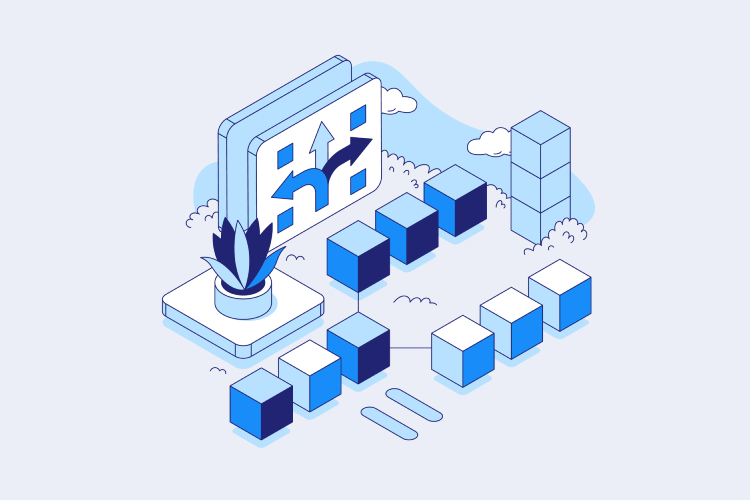Key Takeaways
- Forking is a concept in cryptocurrency that allows blockchain networks to upgrade and adapt.
- A fork is a situation where a cryptocurrency splits into two different versions due to disagreement or change within the network.
- Hard forks create two different versions of the network, while soft forks only create one.
- Forking can have major implications for investors, miners, exchanges, and other stakeholders in cryptocurrencies ecosystems.
Introduction
Forking is an important concept in the world of cryptocurrency, as it allows blockchain networks to upgrade and adapt in order to remain secure and useful. A fork is a situation where a cryptocurrency splits into two different versions due to a disagreement or technical change within the network. This can happen for a variety of reasons; disagreements between developers, changes in consensus algorithms, technological updates, or security issues.
Forks can often lead to internal conflicts within cryptocurrency communities as different groups fight over how best to move forward with future updates or handle contentious issues like governance tokens or proposed changes in protocol rules.
Forks are necessary steps that allow cryptocurrency networks to make upgrades while still preserving continuity and protecting investors’ funds from malicious actors. They allow networks more freedom and flexibility when it comes to making decisions about how best to manage their technology going forward while also helping ensure that it remains secure, reliable, and attractive for investors around the world.
What is a Hard Fork?
A hard fork is a major protocol change or upgrade to the underlying code of a blockchain network that creates two different versions of the same network. This usually occurs when developers and users arrive at a disagreement over how to move forward with technical updates, or proposed changes to the protocol. A hard fork is a permanent divergence from the previous version of the network, meaning that users have to switch over to the new version or risk being left out.
In order for a hard fork to occur, it must be adopted by enough participants on both the old and new networks for them to continue functioning separately. This means that miners and nodes need to recognize it as valid in order for it to be successful. If only one branch of a hard fork is adopted, then it will likely fail because there wouldn’t be enough support from users and miners.
Hard forks are often controversial due to their impacts on investors, exchanges, miners, and other participants within cryptocurrency ecosystems. For example, when Ethereum was hacked in 2016 through its DAO project resulting in millions of dollars being stolen, some members of its community wanted a “bailout” by changing the code so that funds could be refunded back to those who had lost money. The decision sparked debate among Ethereum supporters as some saw it as breaking the blockchain’s censorship resistance and immutability while others felt it was necessary in order to protect their investments. Similarly during Bitcoin Cash’s hash wars between BCHABC and BCHSV—which resulted in an actual split into two separate networks—many miners diverted all of their resources to one side or the other in an attempt to have a hash rate advantage. This resulted in many exchanges having difficulty deciding which ticker symbol should represent Bitcoin Cash going forward.
Hard forks can lead to positive changes for cryptocurrency networks if executed properly however they can also cause chaos if not planned carefully due to their potential impacts on existing stakeholders within cryptocurrency ecosystems like investors, miners, exchanges, etc.
What is a Soft Fork?
A soft fork is a way to make changes to a cryptocurrency network. It is different from a hard fork because it only creates one version of the network instead of two. With a soft fork, miners and nodes still recognize the old version of the network but they also accept new rules that are made. This means that users don’t need to switch over or risk being left out on the old version like with a hard fork. Soft forks can be used if some people want certain changes but not everyone agrees, so they can come up with new rules without splitting into two different networks.
What are the Implications of Forking on Cryptocurrency Networks?
Forking on cryptocurrency networks can have serious implications for investors, miners, and other stakeholders. For instance, when hard forks happen, it could create a situation where mining power and hash rate are split between two different versions of the same network. This could lead to double spending attacks and other malicious activities that would negatively affect users’ investments. Furthermore, if users are not careful when upgrading their wallet software or switching to a new version of the network, they may end up with coins on a minority chain that no one supports anymore. This would make those coins essentially worthless and any potential profits from investing in them would be lost.
Hard forks can also create confusion among investors especially when it comes to which version of the coin is the “real” or original one. Exchanges may struggle with determining which symbol should represent the original coin due to splits in the community over what specific changes should be made for a given protocol upgrade. This could lead to delays in trading certain coins as exchanges try to come up with procedures for handling these cases and allocating resources accordingly.
Soft forks have advantages as well but they also present their own risks such as new rules creating unforeseen security vulnerabilities or unforeseen consequences of upgrades that were not anticipated beforehand. Soft forks also require more coordination between miners and nodes since they must agree upon new agreed-upon rules while still recognizing prior blocks under an established consensus algorithm like proof-of-work or proof-of-stake.
In addition, forks can often result in conflicts between miners and developers who disagree on how best to move forward with proposed changes diminishing investor confidence by causing uncertainty in the market around future developments within a particular project or technology platform. All of these implications must be carefully considered before attempting any major change to blockchain networks as failure to do so could lead to significant financial losses for everyone involved in cryptocurrencies ecosystems both large and small alike.





